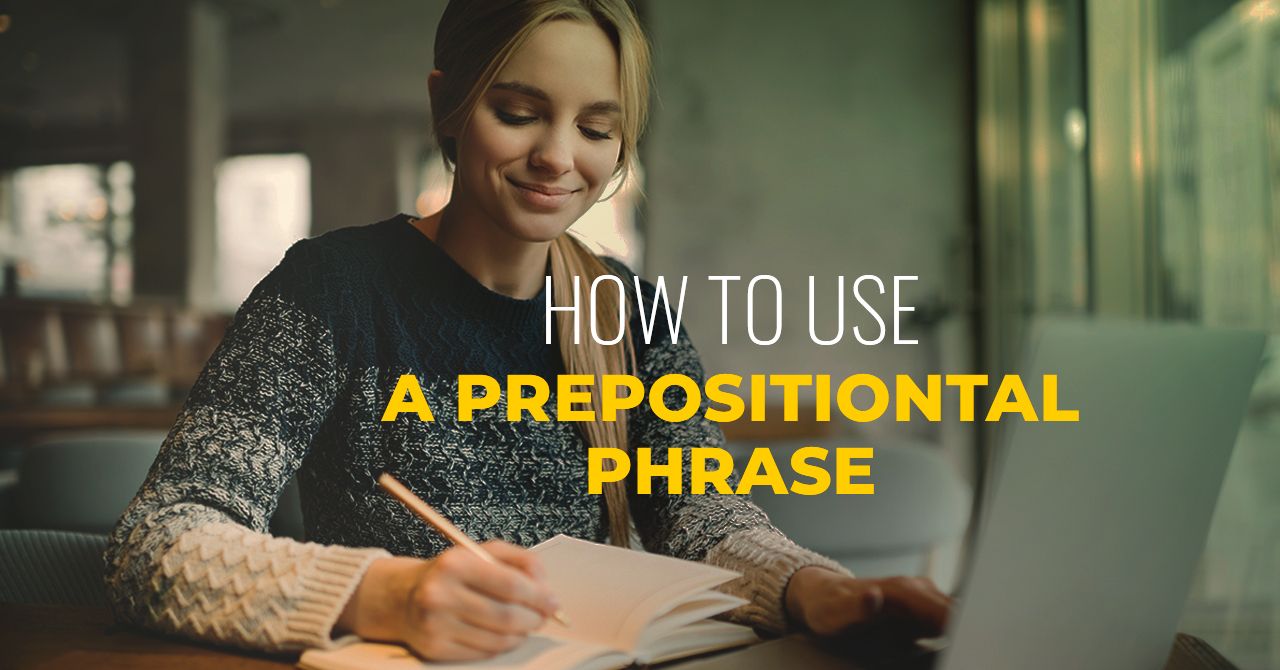
When to Use a Prepositional Phrase and Example Sentences
A prepositional phrase is a group of words that contains a preposition, as well as an object of the proposition, which can be a noun, pronoun, gerund, or adverb.
A prepositional phrase is a group of words that contains a preposition, as well as an object of the proposition, which can be a noun, pronoun, gerund, or adverb. The phrase may also contain modifiers to modify or provide details about the object. These kinds of phrases add information to a sentence.
Prepositions are used for a wide range of different purposes. For example, they are indicators of time, location, direction, and other relationships. Common prepositions used in prepositional phrases include at, in, for, with, without, to, from, and by, among others.
A Prepositional Phrase as an Adjective
If you want to describe a noun, you can use a simple adjective. Alternatively, you could use a prepositional phrase to provide additional information or a description of the noun. These are known as adjectival phrases.
The man with the long beard was walking toward me.
In this example, the preposition is “with,” the object it affects is “the beard,” and the modifier is “long.”
The table in the corner is reserved.
In the second example, the preposition is “in,” and the object it affects is “the corner.”
Prepositional Phrase as an Adverb
This kind of phrase can also be used to describe or give further information about a verb. This makes it an adverbial phrase.
As I ran toward the boarding gate, I thought I might miss my flight.
In this sentence, the preposition is “toward,” while the object it affects is “the boarding gate.”
The dog appeared from its wooden kennel.
Here, the preposition is “from,” the object it affects is “kennel,” and the modifier providing additional information is “wooden.”
How to Identify a Prepositional Phrase
First and foremost, a prepositional phrase must, of course, start with a preposition. It must also end with the object of the preposition, be it a noun, pronoun, or gerund. The object may be described by modifiers, which are situated between the preposition and the object.
I rode my horse to the nearby park.
In this example, firstly, we have the subject—I, the verb in the past tense—“rode,” the direct object of the verb—“my horse.” Secondly, we have the prepositional phrase, which adds details about where I rode my horse: the preposition “to,” the object of the preposition, “the park,” as well as the modifier “nearby,” which provides information about the location of the park.
Other Examples
I’m going to the movies at six o’clock.
They bought a gift for me.
We made it to the finish line after several hours.
I forgot the code for the safe.
She hasn’t seen him for ages.
The party at the end of the year will be extraordinary.
He was kind by nature.
Last season’s clothes are sold at a discounted price.
You phoned me by mistake.
All the stores are out of stock.
The boy is running down the street.
He’s lost, without a doubt.
The girl put her diary on the table.
Phrasal Verbs Versus Prepositional Phrases
Sometimes, verbs can be followed by prepositions to create a whole new verb, called a phrasal verb. The prepositions in these cases are actually known as particles. Concerning pronunciation, we don’t stress prepositions. However, we do stress particles. In the following examples, you can see the prepositions in red compared to the particles in blue:
Turn down the next street on your right.
Turn the volume down, please.
I’ve never worn this coat out of the house.
This cot is so old. It’s worn out.
He just ran over the finish line.
He nearly ran over a hare.
He was looking up the mountain.
He was looking up a word in the dictionary.
Hello! My name is Beth. I'm from France. I'm a French and English native speaker and I really like writing.

